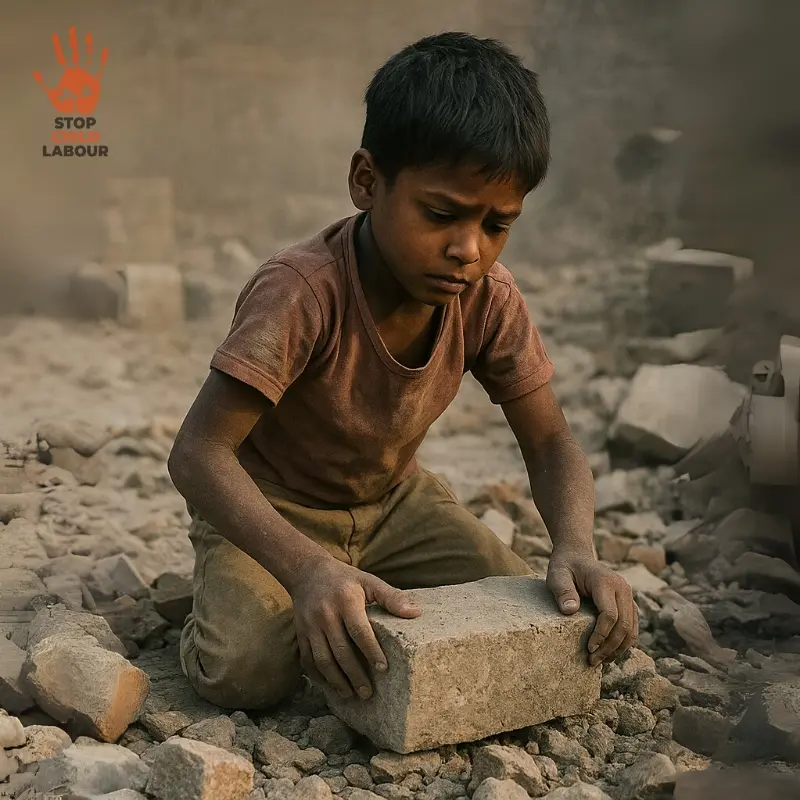Stop Child Labour
The Hidden Reality of Child Labour in Urban Slums
When people think of child labour, they often imagine rural fields, brick kilns, or far-off factories. But the harsh truth is that child labour is not confined to remote villages — it exists right in the heart of our cities, hidden in plain sight.
In the narrow lanes of urban slums, thousands of children work in dimly lit rooms, cramped workshops, or on busy streets, struggling to earn a few rupees instead of sitting in a classroom. At Udayshaala Seva Trust, we see this every day — and we work tirelessly to change it.
Why It Happens
Child labour in urban slums is driven by a mix of poverty, lack of education, and family circumstances:
Extreme Poverty – Parents struggling to earn enough for daily meals often see their children’s income as a necessity.
Migration – Families who move to cities in search of work often end up in slums with no access to schools or social support.
Debt and Exploitation – In some cases, children are forced to work to repay small family debts to shopkeepers or employers.
School Dropouts – Without proper support, many children drop out of school and enter the labour force before their teenage years.

The Types of Work Children Do
In urban slums, child labour is often informal and scattered, making it harder to detect. Common forms include:
Garment Stitching & Piece Work – Children like Saniya once stitched hooks on clothing for ₹20 a piece, inhaling dust and straining their eyesight.
Electrical Wire Stripping – Kids melt plastic off wires to extract copper, breathing in toxic fumes.
Roadside Vending – Selling snacks, trinkets, or tea to earn small daily wages.
Domestic Work – Working in middle-class households, often exposed to abuse or exploitation

The Hidden Cost on Children
While these jobs bring in small amounts of money, the long-term cost is devastating:
Lost Education – Missing school means losing the chance at a skilled, stable future.
Health Hazards – Toxic fumes, heavy lifting, or long hours damage growing bodies.
Emotional Trauma – Living under constant work pressure robs children of their right to play, dream, and simply be children.

Breaking the Cycle
At Udayshaala Seva Trust, we tackle the root causes of child labour by:
Rescuing Children from Work – Through community outreach, we identify children at risk and work with their families.
Providing Free Education – Our centres offer schooling, tuition, and learning materials so parents don’t have to choose between food and education.
Skill Development for Families – Training parents (especially mothers) in skills like tailoring so household income rises without child labour.
Awareness Campaigns – Educating communities on why child labour harms both children and society in the long run.

What You Can Do
Child labour in urban slums remains invisible to many — but you can help bring it to light and end it.
Sponsor a child’s education for as little as ₹500 a month.
Support our skill training programs for parents.
Share these stories so more people understand the reality.
Every child deserves the right to learn, play, and dream — not work in silence.
Join us in creating a future where no child is forced into labour, no matter where they live.
